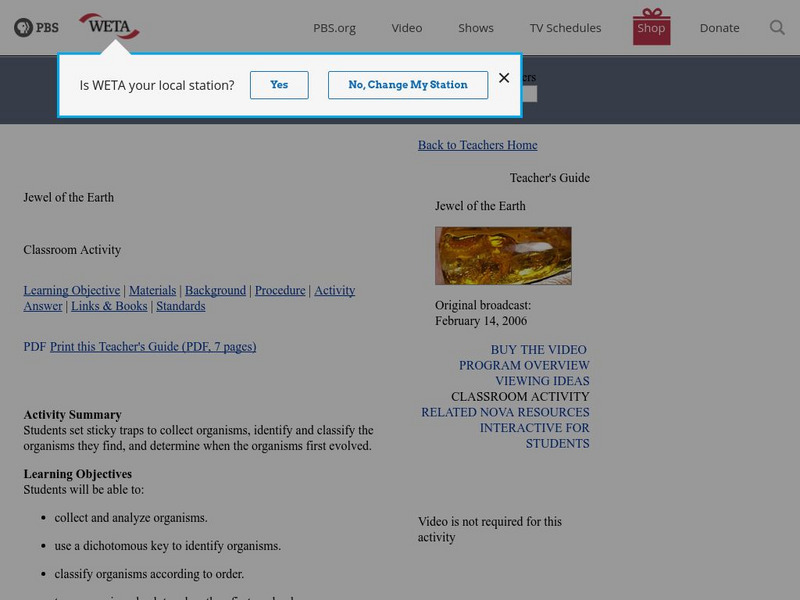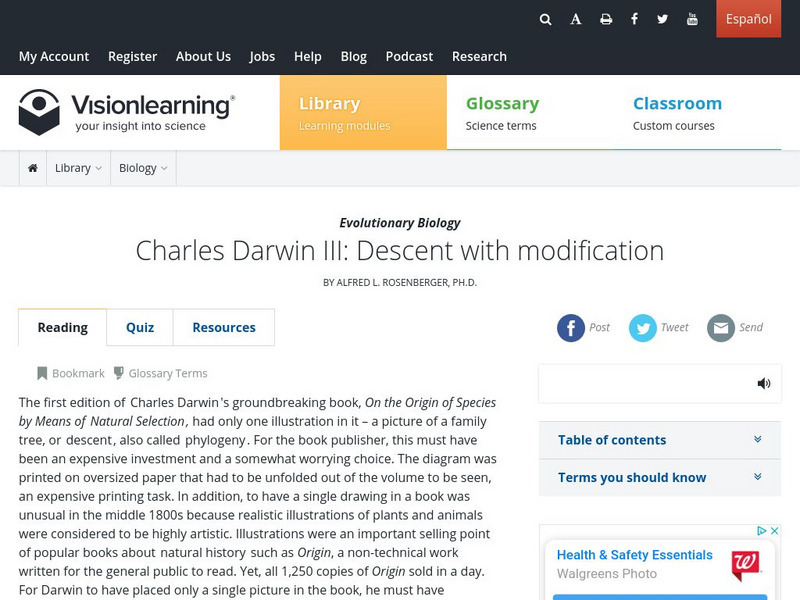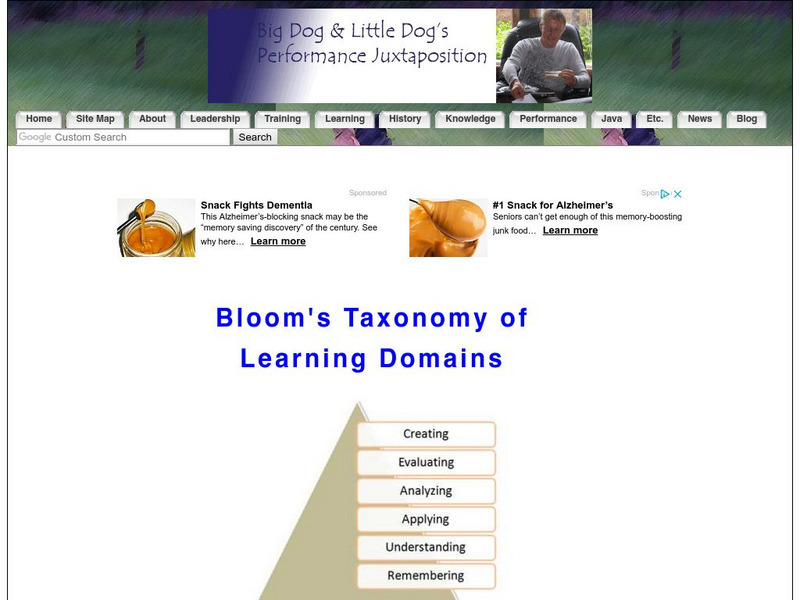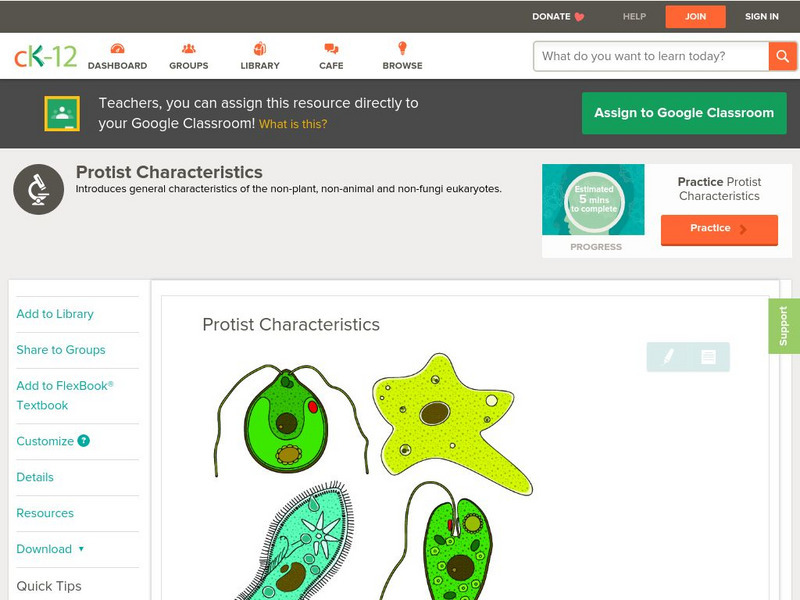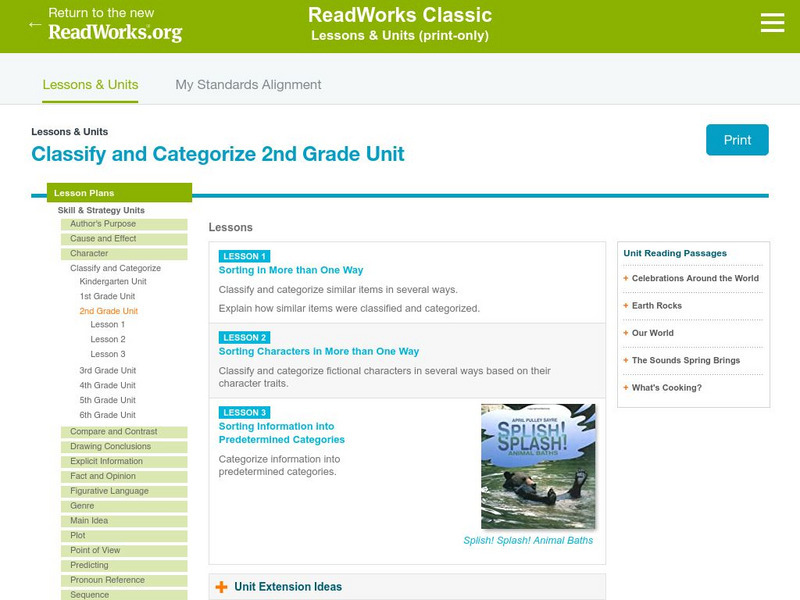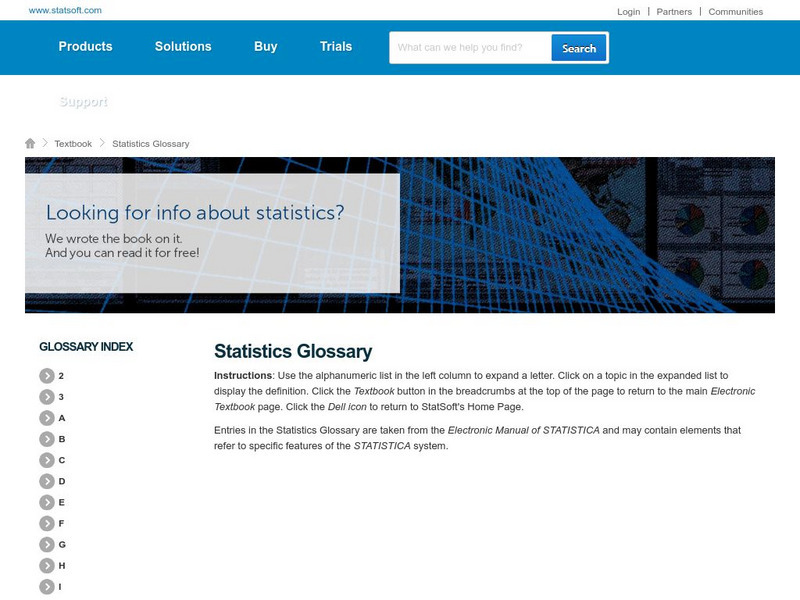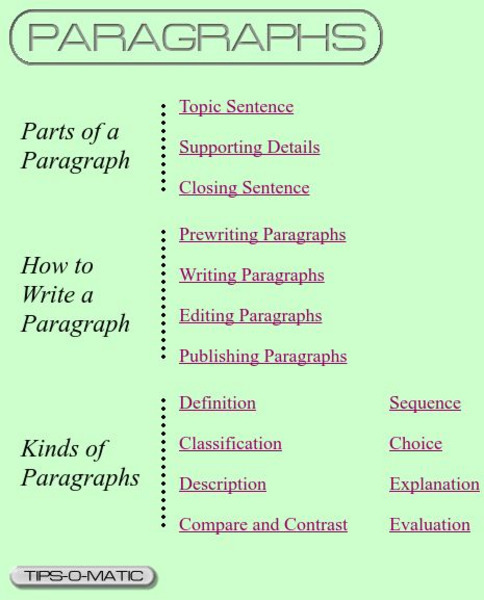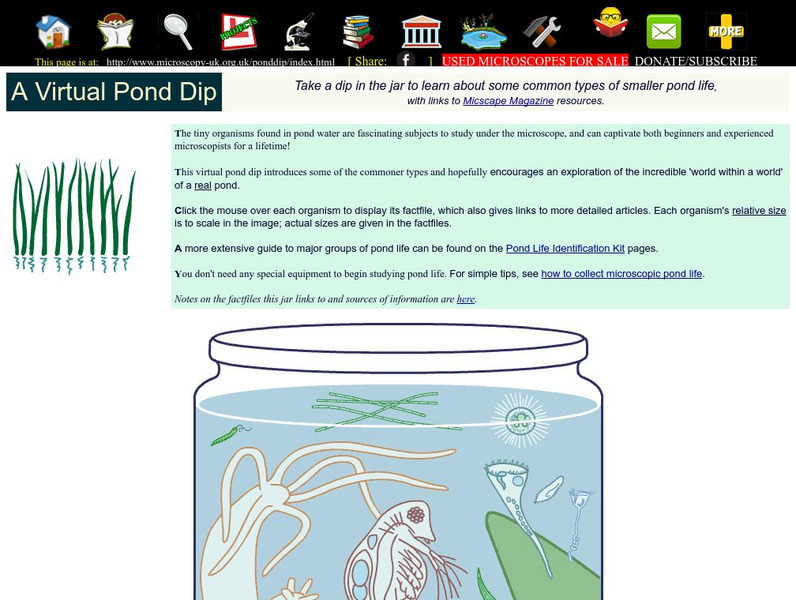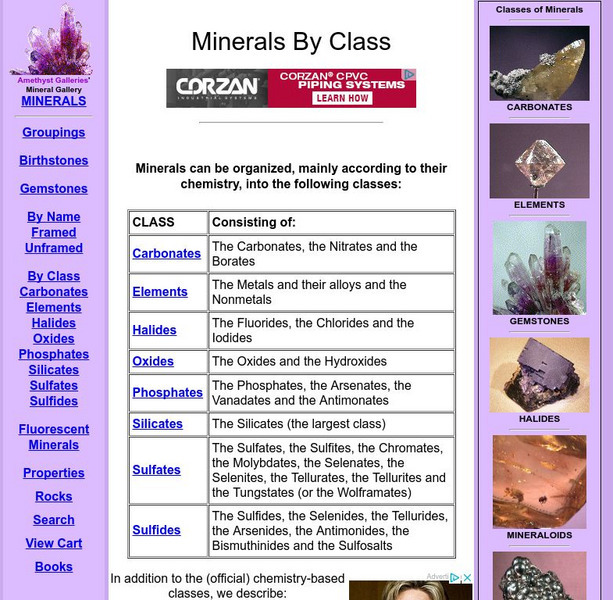Hi, what do you want to do?
PBS
Pbs Teachers: Jewel of the Earth
Collect and analyze organisms and use a dichotomous key to identify and classify the organisms. Research the evolutionary history of organisms.
American Museum of Natural History
American Museum of Natural History: O Logy: Beyond T. Rex
Launch this OLogy link to find a dinosaur cladogram, an illustration that organizes dinosaurs into groups based on the unique characteristics they share, like a three-toed foot.
Alabama Learning Exchange
Alex: Learn the Library of Congress Classification System
The students will develop an understanding of the organization of main and primary subclasses of the Library of Congress Classification System. The students will demonstrate knowledge and independence in using the LCC through online...
Other
Jean Piaget Society
Learn more about Jean Piaget from this website. The site is dedicated to the study of human knowledge and development.
Vision Learning
Visionlearning: Biology: Charles Darwin Iii: Descent With Modification
Instructional module focusing on Charles Darwin's theory of Descent with Modification. Discusses how slight changes from parent to offspring create variation and potentially create new species over time. Site also includes an interactive...
Donald Clark
Bloom's Taxonomy of Learning Domains
This article--in text and charts--explains the three learning domains devised by Benjamin Bloom.
Estrella Mountain Community College
Online Biology Book: Biological Diversity: Fungi
Find out about the kingdom of fungi. See full-color diagrams and microscopic photographs as you learn about the classification of this group of organisms.
BiologyWise
Biology Wise: Amoeba Facts
Presents facts about amoebas, including their physical characteristics, reproduction, and classification.
Biology Corner
Biology Corner: Cladogram Analysis
A lesson plan where students analyze a cladogram to understand a derived characteristics between a group of organisms. After analyzing the prepared cladogram, students create their own.
CK-12 Foundation
Ck 12: Life Science: Protist Characteristics
[Free Registration/Login may be required to access all resource tools.] Protists are eukaryotes, which means their cells have a nucleus and other membrane-bound organelles. Most protists are single-celled. Other than these features, they...
Other
Tidewater Community College: Writing Center: Organizing Paragraphs and Essays
This page gives a quick, but thorough look at a few good ways to organize a piece of writing.
CPALMS
Florida State University Cpalms: Florida Students: Diagramming Diversity Ii
Expand understanding of classification with this tutorial designed to help you learn how living organisms are classified according to their evolutionary history.
PBS
Pbs: Mathline Creature Feature Lesson Plan [Pdf]
An interdisciplinary math, science, and language arts lesson that engages students in an exploration of statistics. Through a study of various forest climates, students utilize data collection and analysis, classification, and graphing....
Read Works
Read Works: Classify and Categorize 2nd Grade Unit
[Free Registration/Login Required] A series of three lesson plans designed to teach students to classify and categorize items, characters, and information. The third lesson plan is based on the book Splish! Splash! Animal Baths by April...
Other
Stat Soft: Statistics Glossary
Dozens of statistical terms are defined and illustrated in this glossary.
Shippensburg University
Shippensburg University: Personality Theories: Jean Piaget
This is an excellent resource on the life and work of the Swiss educational psychologist Jean Piaget (1896-1980).
ACT360 Media
Writing Den: Paragraphs
How do you write a paragraph? Use this site to learn more about the different parts of a paragraph.
University of California
Ucmp: Introduction to Ctenophora
This is an advanced level review of the biology of these organisms. The opening photographs are worth seeing!
Microscopy UK
Microscopy Uk: A Virtual Pond Dip
In this site, you will be introduced to some of the more common organisms found in a pond. Contains a thorough guide to small and microscopic pond life with links to other descriptive sources.
Amethyst Galleries
Amethyst Galleries: Mineral Gallery: Minerals by Class
This is a detailed reference list of minerals and mineral classes.
Georgia Department of Education
Ga Virtual Learning: Ap Biology: Animals
This unit focuses on the unique structure and function of both invertebrate and vertebrate animals. Students review their understanding of animal diversity, and take a closer look at the various organ systems found in the animal kingdom.
CK-12 Foundation
Ck 12: Episd: Animal Characteristics
[Free Registration/Login may be required to access all resource tools.] Students will be able to identify and classify organisms that are animals based on recognition of traits presented.
Polk Brothers Foundation Center for Urban Education at DePaul University
De Paul University: Center for Urban Education: I Can Classify and Summarize Information [Pdf]
A graphic organizer is provided to help students classify information in a nonfiction piece. Then students will write a summary of the information contained in the graphic organizer.
Other
Oikos.org: Jean Piaget
"The basic reason for this international attention was the unquestionable fact that Piaget was the founding father of a branch of psychology that tries to unravel the mysteries of the human mind, how it grows and how it comes to know."...





